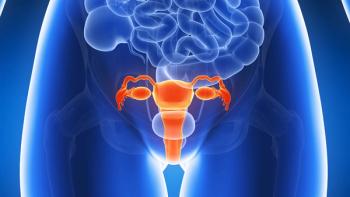
Olanzapine/Triplet Cuts Chemotherapy-Induced Nausea, Vomiting in Breast Cancer
Those who took olanzapine reported higher levels of satisfaction than patients on placebo.
Adding 5 mg of olanzapine to triplet antiemetic therapy entailing an NK-1 receptor antagonist, palonosetron (Aloxi), and dexamethasone yielded greater antiemetic efficacy compared with placebo for patients with breast cancer following prior treatment with anthracycline plus cyclophosphamide-based chemotherapy, according to data from a phase 3 trial (jRCT1031200134) published in Lancet Oncology.
After a median follow-up of 168 hours (IQR, 168-168), the complete response (CR) rate for the duration of treatment in the olanzapine group was 58.1% vs 35.5% with placebo, showing a difference of 22.7% (95% CI, 14.0%-31.4%; P <.0001). In the acute phase, characterized as the first 24 hours after treatment, the CR rates were 76.4% vs 55.6%. In the extended delayed phase, characterized as 24 to 168 hours posttreatment, the rates were 62.9% vs 41.5%.
Additional data revealed that the time-to-treatment failure was significantly longer in the olanzapine arm, with it not being reached vs a median of 37.3 hours (95% CI, 22.2-49.5) in the placebo arm (stratified HR, 0.495; 95% CI, 0.385-0.635; P <.0001). Furthermore, 3 (~1%) patients in the placebo group vs 0 patients in the olanzapine group were censored before 168 hours. Two patients underwent censoring at 48 hours and 1 underwent censoring at 72 hours, with censoring occurring after the adverse events (AEs) or suspicion of AEs.
“[T]o our knowledge this is the first double-blind, randomised, placebo-controlled phase 3 trial to show the significant overall
Investigators in the phase 3 trial randomly assigned patients with stage I to III breast cancer, in a 1:1 ratio, to receive the triplet antiemetic therapy with either olanzapine (n = 251) or placebo (n = 249). All patients received 0.75 mg of palonosetron 30 minutes before chemotherapy, oral aprepitant (Emend) at a dose of 125 mg 1 hour before chemotherapy and 80 mg on days 2 and 3 of treatment, or 150 mg of intravenous fosaprepitant, as well as 9.9 mg of intravenous dexamethasone. Treatment was given as a single course over 4 days in the first cycle of anthracycline plus cyclophosphamide-based chemotherapy.
Patients received 5 mg of oral
The median age in the olanzapine and placebo groups was 52 years (IQR, 45-60) vs 51 years (IQR, 46-60), respectively. A total of 99% vs 100% of patients in each respective group had an ECOG performance score of 0. The most commonly received chemotherapy regimens included epirubicin plus cyclophosphamide (37% vs 34%), dose-dense epirubicin plus cyclophosphamide (27% vs 32%), and doxorubicin plus cyclophosphamide (28% vs 25%).
The primary end point of the trial was CR rate. Secondary end points included complete control rate, total control rate, time-to-treatment failure, safety, and satisfaction with antiemetic therapy.
The most common severe adverse effects (SAEs) in the olanzapine and placebo groups included anorexia (13% vs 38%, respectively) and constipation (12% vs 16%), with severe concentration impairment reported in 10% and 14% of patients. Additionally, experimental grade 3 to 4 AEs in either arm included somnolence (2% vs 0%) and concentration impairment (1% vs 0%), with no grade 5 AEs or treatment-related deaths observed on study. Three patients in the placebo arm discontinued treatment due to the presence or suspicion of drug-related toxicities.
The proportion of patients reporting satisfaction with antiemetic therapy was higher on a 7-point scale in the olanzapine group vs the placebo group.
Reference
Saito M, Lihara H, Shimokawa M, et al. Overall efficacy and safety of olanzapine 5 mg added to triplet antiemetics for an anthracycline-containing regimen in patients with breast cancer: a phase 3, double-blind, randomised, placebo-controlled trial. Lancet Oncol. 2025;26:960-970. doi:10.1016/S1470-2045(25)00233-5
Newsletter
Knowledge is power. Don’t miss the most recent breakthroughs in cancer care.
















































































